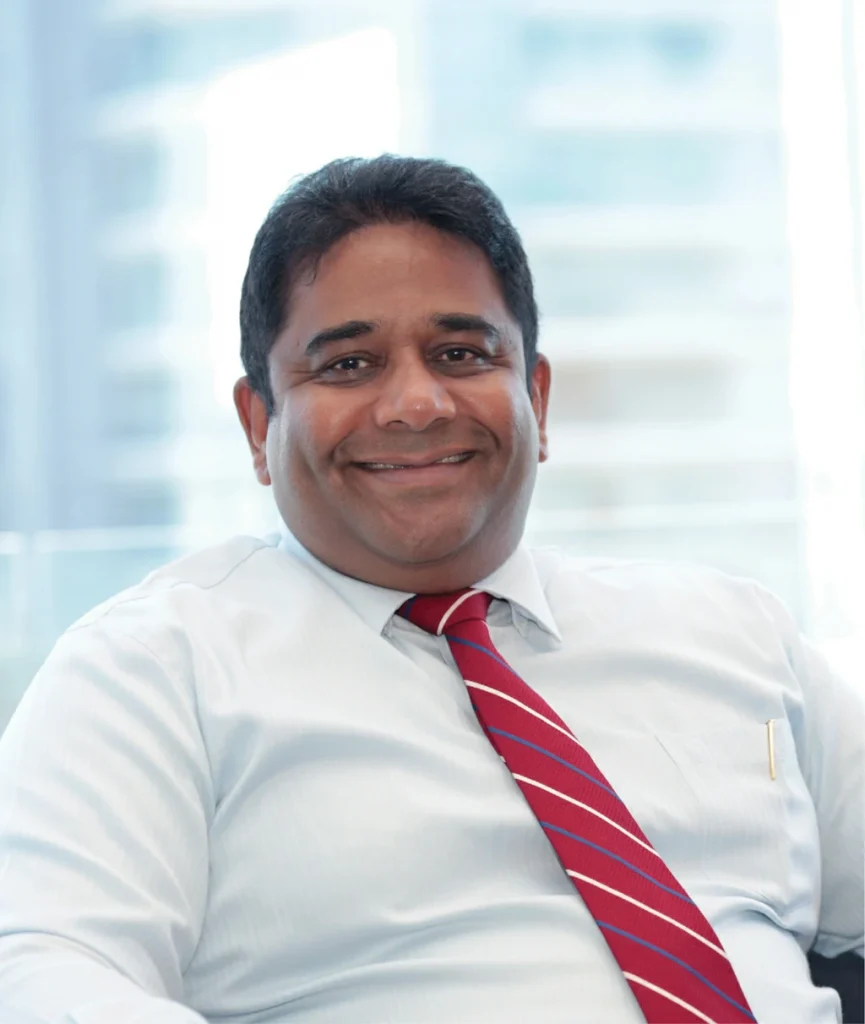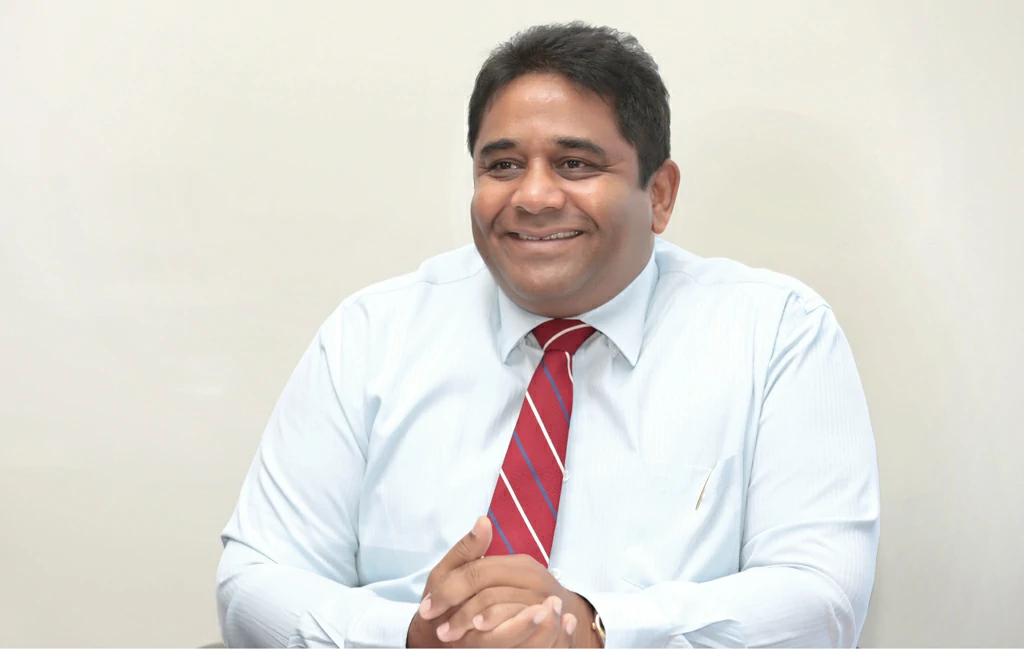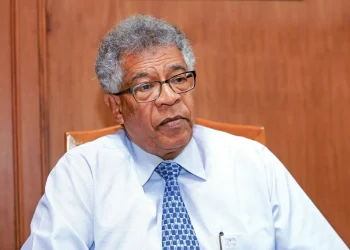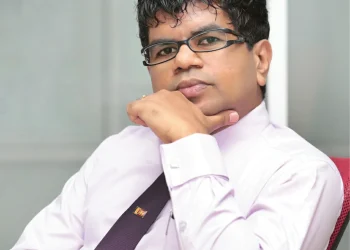
Seylan Bank has been in the sector for 28 years. Its journey has not been easy, having experienced a crisis of confidence in the recent past. Yet, Seylan Bank has been able to emerge with strength and regained its position as a stable financial institution in the country. Kapila Ariyaratne, CEO speaks about the progress of the Bank and its achievements as it continues on its promise to deliver as the ‘Bank with a Heart’.
By Udeshi Amarasinghe
Photography Mahesh Bandara and Menaka Aravinda
Since your appointment as the CEO of Seylan Bank in 2011, can you tell us about the strategies and direction in which you have taken the Bank and performance of thus far?
Going back to the period of 2010-2011, that is following the crisis in 2009, we had a completely different set of priorities than what we have now. At that time, it was all about reawakening the work force, relooking and building our brand. Within those key areas we had to do many adjustments within the organization. We looked at all processes to have greater efficiency, instill customer confidence and build the brand. Many of these strategies had to be internally focused. We looked at our systems and at what needed to be done with our staff in order to refocus their attention. It is with that kind of background that we started our strategic planning process in 2011. We have developed a process with the participation of all the staff. We had about 95 workshops at that time all over the island because we wanted to have a plan that everyone had ownership of; because that was the need of the hour. We came up with a robust plan, which in hindsight has worked very well. We were able to achieve our targets within five years. We then rolled it over, adjusted, re-strategized and took it forward for another year. This became a five-year plan that ran from 2012 to 2016.
We have progressed fairly closely to our financial projections. We have substantially decreased our non-performing assets, which were very high soon after the crisis. Today we are very close to industry standards, we are still a little higher but that is because we have a legacy in NPAs that is still remaining. If not, we would be on par with industry standards. We have also improved our bottom-line by almost four times. Those are some of our successes. We have completely transformed our brand, it has become a more accepted and trusted brand.
We Looked At All Processes To Have Greater Efficiency, Instill Customer Confidence And Build The Brand.
Staff are transformed, they are motivated and they are very closely aligned to the overall strategic vision of the Bank. Everyone knows their role and responsibilities. Our network has grown from about 120 branches to 165. We plan to grow further. We have had to make certain adjustments. In 2013 we faced the pawning crisis, then there was a credit cap brought in by the Central Bank. These things have required us to revaluate our processes and expansion. Our branches look different, we have upgraded the buildings and infrastructure to make it much more customer friendly and technology savvy. We have achieved almost everything that we intended to achieve. That has obviously made us very happy.
We have different priorities in our new plan, because our foundation is now in place. We have robust governance and risk management structures, which are quite necessary to sustain the changes that we were making. We are ready and the next stage is of course growth. We are focusing on growth, catching up on market share and competing more aggressively.
You spoke about the crisis, today Seylan Bank is one of the most stable banks in Sri Lanka. Can you tell us a little bit about this?
That period, the way I interpreted was more of a crisis of confidence than it was anything else. Of course, the manner in which the customer perceives us is very important because the Bank operates on the customers’ confidence. We have only 10-15 per cent capital, rest of our activities are financed by the customer deposits. Therefore, it is a very important factor as much as anything else. In terms of capital, after we took the necessary measures; our profitability improved. We had the commitment of our shareholders and the Bank had a rights issue, which was over subscribed. Our capital position is quite good. This is running close to 14 per cent despite the fair growth we have had. Our plan is to continue that trend. We are also receiving funding from very respected international multilateral agencies and we recently raised 75 million dollars; from that about 50 million dollars was from DEG – German Development Bank, the Austrian development bank and the OPEC fund who have recognized not only the resurgence, our resilience and stability, but also the role that we play in the SMEs. They have tied up with us to help out the SMEs and also provided the necessary funding. All those factors have contributed to the stability of the Seylan Bank. Of course, our own performance and the confidence of the customers have helped us.
Could you tell us about the expansion of Seylan Bank?
The Bank has grown fairly selectively, in creating new branches. We have to follow Central Bank guidelines and also standards. We have also been able to follow and maintain the requirements. We have converted all the service centres, which were limited operation branches into full branches. Almost 30 such centres have been converted into full branches. Our focus has been to ensure that the branches have an optimal level of operations, both in terms of profitability and customer acquisition.
We Are Looking At Both Aspects, Enhancement Of Our Digital Capabilities As Well As The Brick And Mortar Branches That Are Spread Across The Country.
While doing that we are now looking very carefully at the areas in which we can expand, because now the economy has taken a slightly different direction. We can determine the growth areas and where the Bank’s presence is needed most. But having said that I must add that while we are looking at branch expansion, we are looking very aggressively at the digital expansion as well, and improvement and introduction of digital banking options to all our customers. If you look at Facebook we are one of the most engaged and one of the most active banks on the social media. But not only that, we have also revamped our website, our internet banking solutions and we are adding more solutions along the way. We are looking at both aspects, enhancement of our digital capabilities as well as the brick and mortar branches that are spread across the country.
You mentioned about the recent long-term funding facility. Can you elaborate on which areas this will be focused on?
The focus is on SMEs, but that is not a new area for us because the Bank has traditionally been focused on SMEs. That has been our forte and our strength as well. That is one of the factors in the last five years that has helped us. Post war, our strategy was closely aligned with government strategy and the priorities of the country’s economy. The fact that our branches had close relationships with SMEs naturally helped us because we supported them and the relationships were mutually beneficial.
The funding we have received is basically meant to deepen these relationships, to help them and create new relationships as the economy and this segment grows. In addition to SMEs, we are also looking at less developed areas of the country. We have identified them and we have agreed with the donors that there will be certain amounts channelled into those districts, which is fine because that is our own strategy as well.
What can you tell us about the bank’s performance in the other segments?
While our books have grown naturally, it needs to be supported by similar growth in advances and deposits. We have seen that growth not only in the retail segment but also in the corporate and institutional segment, which is a testimony to the renewed confidence they have had in the Bank. While the Bank has grown a little extra in the middle market segment, we have also grown in the corporate as well as retail segment. We have re-launched products such as our personal loans, we have revamped our proposition for Tikiri – the flagship minors account, and also introduced accounts for the youth. Many of our accounts have value added features. We have conducted research, communicated with our customers and improved these products with what they want. We introduced a call centre and our cards are much more active. The retail proposition is also growing. We are focusing on all those areas.
Can you tell us about the future plans of Seylan Bank?
The 2020 vision is based on growth and adapting to the evolving changes. That is with the technological changes of the country, while at the same time keeping to our motto, which is ‘The Bank with a Heart’.
Thus, all of our activities are based on that and the Bank has adopted a customer-centric approach. Our branch managers do excellently and that is something we always encourage. It is an investment, because it takes time. But in the long run it pays and it helps us through a closer, more mutually beneficial relationship.
The 2020 Vision Is Based On Growth And Adapting To The Evolving Changes. That Is With The Technological Changes Of The Country, While At The Same Time Keeping To Our Motto, Which Is ‘The Bank With A Heart’.
Growth requires us to change the way we operate. Therefore, we always look at how we operate now and see how we can improve things, we will focus on our low-cost funds, improve our savings and current account propositions. We will deepen the segment and add value to what people want. The Small and Medium-sized Enterprises (SMEs) is another critical focus area for us so we will look at that.
We also have the good fortune to have amongst our branch network some fairly large customers who are almost reaching corporate level. We are working on a separate proposition for them. While allowing them the convenience and the comfort of banking with our branches. Then on the IT side we are introducing many additional features. We have already made the investments this year and we will be improving the existing systems as well. Bringing into a play many new products and services so the customers can bank with more efficiency and add value to what we do everyday, thereby enabling them to do their banking while having time to attend to their own business.
Our staff have been our greatest asset and we are very fortunate to have a staff that is young but also experienced. Seylan Bank is 28 years old, our staff is mature in terms of skill and experience because they understand their market and customers. They are also more focused on operating efficiently, making use of technology, and the staff has been the main strength when the Bank required customer confidence to be re-instilled. The staff has been very committed and that has always been one of our biggest assets and it will continue to be one of our biggest assets. As we change and continue to grow we are putting a lot of focus on reskilling our staff because its different ways of working and different expertise. It is one of the main pillars that we have in our new strategic plan – that is how to re-skill as well as re-train our staff to meet these new challenges.
Competitiveness Has Grown, But I Feel That Also Makes The Banks Stronger And Gives The Customer Much Better Overall Proposition And Choice.
Seylan Bank will continue to deliver as expected. We will keep up with innovation and focus our investments into finding out what our customers want and how to serve them better and we will serve them better.
What about the positioning of Seylan Bank?
We are the bank with a heart. Thus, our customers are used to that and they expect that from us. Everything we do is with our one eye on that. It is built into our DNA. Our staff understands that and it is very easily conveyed to our new employees by our senior staff. The service factor; closeness to the customers; and making the customer feel at ease and welcome have been the differentiating factors. That of course is not enough. It takes us a long way but that it is not enough. We have brought in the expertise and the skill to our staff as well, who are now better skilled at identifying what our customers want and help them in a pro active way. We excel in doing that with a smile and the customers recognize repay us with their loyalty.
What are your thoughts on banking sector in Sri Lanka?
Overall the banking sector has done well in the conditions that we have operated. We performed during a 30-year long war. Banks survived and grew in strength and showed great resilience. We also showed commitment to keep the country and business going. Once peace and security was established in the country, the banks have grown in line with what the market requires and have responded well in terms of supporting the growth of the country. Overall, liquidity is good and the capital adequacy ratio as an industry is fine too.
The sector has done fairly well and will continue to do well. Competitiveness has grown, but I feel that also makes the banks stronger and gives the customer much better overall proposition and choice.
How can the industry form greater synergies and a more customer centric environment?
A customer centric approach is essential because after all customers have a choice now. There other factors such as telcos coming in. Bankers are experiencing increasing pressure to respond to these changes. We are changing and we are recognising that. We understand that the new generations and our younger customers want to bank in a different way, that their priorities, their wants and needs are different. We are responding to their need. That is always a hard thing to do because we have to balance our growth, profitability as well as investments in the future.
Can you tell us about yourself?
I completed my studies in bioscience, majoring in biology and chemistry. I worked in companies in related fields such as the ICI Subsidiary CIC and then Union Carboid before I joined the banking sector. I have been in this sector since 1984. I have had the good fortune to be involved in all the different types of banks. My first employment was with foreign banks, and I had nearly a ten year stint with People’s Bank. I was involved with People’s Bank when they underwent a restructuring process. Therefore, I have experience in both international as well as state banks. I also worked for a period at NTB and now at Seylan Bank. I have basically witnessed it all. That combined experience proved to be quite useful here. At the end of the day it is really all about understanding what you need to do, and also understanding the people that you are working with, and getting them together towards a common goal. That is not too much of rocket science there.






